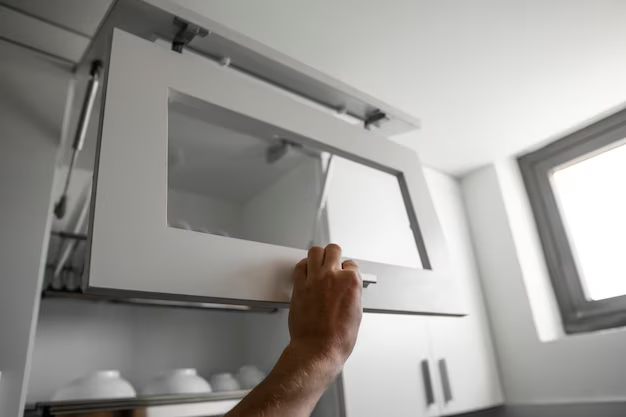The Ultimate Guide: How to Perfectly Measure Your Refrigerator Space
Choosing the right refrigerator is crucial for optimizing your kitchen space and ensuring it meets your daily needs. One of the most essential steps in this process is accurately measuring the space available for your new refrigerator. Whether you’re replacing an existing fridge or installing a new one, understanding how to measure for a refrigerator space can save you future trouble. Let's dive into this journey, providing you with all the insights you need for a smooth installation.
Why Accurate Measurements Matter
Imagine purchasing a stunning new refrigerator, only to discover it doesn’t fit in your kitchen space or it prevents your cabinet doors from opening! Accurately measuring the refrigerator space can prevent these costly and inconvenient mistakes. Here are a few reasons why precise measurements are vital:
- Space Efficiency: Correct measurements ensure your refrigerator fits well, optimizing kitchen space.
- Aesthetics: A well-fitted refrigerator complements your kitchen design.
- Functionality: Ensures proper ventilation, door swings, and ease of use.
Tools You’ll Need
Before you start measuring, gather these common household tools:
- Tape Measure: Ensure it's long enough to cover wide dimensions.
- Notepad and Pen: Handy for jotting down all measurements.
- Level: Important for ensuring surfaces are even and flat.
- Optional: A friend to help in holding the measuring tape for large spaces.
How to Measure Your Refrigerator Space
1. Measure the Width
Begin by measuring the width of the space where the refrigerator will sit.
- Tips: Measure from wall to wall, or cabinet to cabinet. If there are baseboards, measure between them rather than ignoring their presence.
- Reminder: Take measurements at multiple heights (top, middle, bottom) since walls are not always perfectly straight.
2. Measure the Depth
This measurement includes any obstructions that can affect how your refrigerator fits.
- Defining Depth: Measure from the back wall to the front edge of counters or walls, ignoring any door handles.
- Cabinetry: Ensure that surrounding cabinetry or other appliances won’t impede refrigerator installation or door opening.
3. Measure the Height
Measure from the floor to the lowest point of any cabinetry above. This is crucial for ensuring your refrigerator fits beneath overhead cabinets.
- Consider Ceiling Lights: Be mindful of lighting fixtures that may hang lower.
Allowing for Door Swing and Clearance
Door Swing
Consider how much space is needed for the refrigerator doors to fully open:
- Measure the door width and clearance required for the hinge side of the refrigerator.
- Ensure there’s enough room to access the interior comfortably.
Clearance Space
Allow proper ventilation for efficient operation:
- Sides: Leave at least 1-2 inches for ventilation.
- Top: A few inches between the top of the fridge and any cabinetry.
- Back: Ensure a couple of inches are available for the refrigerator to "breathe."
Accounting for Ventilation and Accessibility
Ventilation
Ventilation is key for maintaining the efficiency of your refrigerator. Without proper airflow, your appliance could overheat and potentially malfunction.
Accessibility
Consider the surrounding spaces. Ensure sufficient room for paths and movement around the refrigerator for functional flow and accessibility in the kitchen.
Types of Refrigerators and Their Requirements
Choosing a refrigerator style can impact the space it requires. Here’s a quick look into common types:
1. Top-Freezer Refrigerators
- Require less width, making them ideal for narrower spaces.
- Generally need substantial height clearance.
2. Bottom-Freezer Refrigerators
- Often have drawers, needing clear space for pull-out access.
- Depth and door swing space is vital to consider.
3. Side-by-Side Refrigerators
- Ask for substantial width but less door swing space.
- Ensure you have clearance for handles and doors on both sides.
4. French Door Refrigerators
- Generally wider and require door clearance.
- Preferred for spacious kitchens with ample room to open wider doors.
Common Measurement Mistakes to Avoid
- Ignoring Baseboards: Excluding them can lead to an improper width measure.
- Not Measuring Multiple Points: Consistency ensures clearer results.
- Forgetting Ventilation: Not accounting for airflow can reduce refrigerator lifespan.
- Overlooking Entryways: A refrigerator that fits the spot may still fail to pass through doorways!
📝 Handy Measurement Checklist
To ease the process, keep this checklist handy:
- ✅ Width: Measure at different heights.
- ✅ Depth: Include obstructions, manage back clearance.
- ✅ Height: Account for low-hanging light fixtures.
- ✅ Door Swing: Check adjacent walls or cabinetry.
- ✅ Clearance: Allow spaces for ventilation + accessibility.
Bringing Measurements to Retail
When shopping for a new refrigerator, bring all your measurements along. Taking photos of your kitchen space can also assist sales associates in advising you. Be prepared to discuss appliance needs, ensuring you choose a model that suits your lifestyle and kitchen.
Securing Professional Help
If all this measuring feels overwhelming, consider consulting with a professional designer or installer. Their expertise can streamline the entire process, ensuring complete satisfaction and perfect fits.
In Summary
Selecting the right refrigerator isn’t just about aesthetics or features, but prominently about fitting seamlessly within your kitchen space. Following the detailed steps above will aid in achieving precision. By prepping with the correct tools, avoiding common pitfalls, and considering ventilation and accessibility, you can enjoy the benefits of a refrigerator that fits perfectly and functions flawlessly.
Now you're ready to make confident, informed decisions for measuring your refrigerator space and picking the perfect appliance! 🛠️✨
